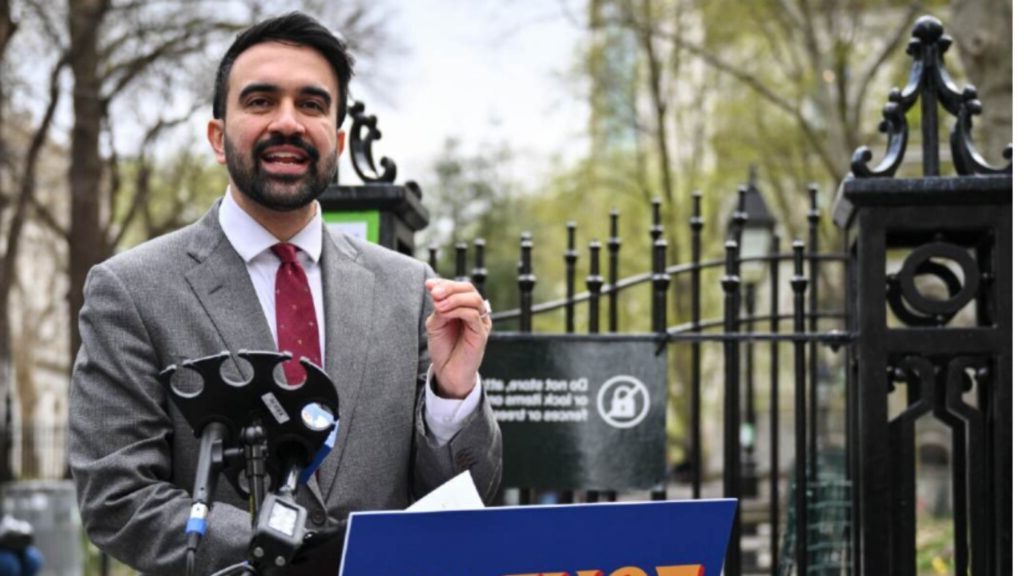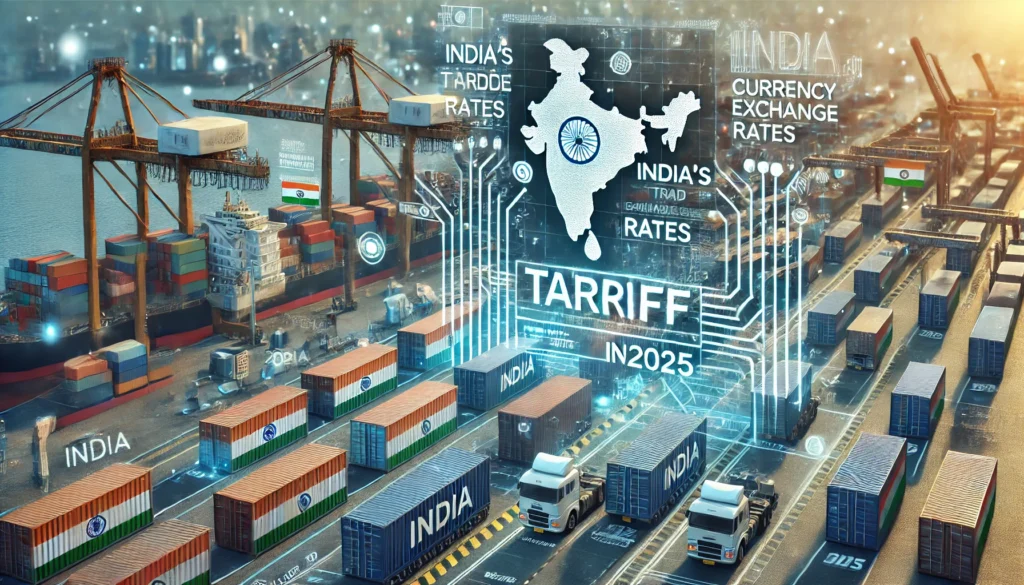India’s Tariff Policies in 2025: Navigating Protectionism and Global Trade Challenges
India’s tariff policies in 2025 showcase a balancing act between protecting domestic industries and responding to international trade pressures. Learn how India is navigating this complex landscape.
India’s Tariff Strategy in 2025
India’s approach to tariffs in 2025 represents a fine balancing act, as the country seeks to protect its domestic industries while maintaining favorable relations with international trade partners. In the wake of global trade uncertainties, India has adjusted its tariff policies to shield its industries from unfair competition, while also grappling with pressure from the United States and other trading nations.
With global markets becoming increasingly interconnected, India’s decision to implement tariffs on certain imports has far-reaching implications. From the steel industry to textiles and pharmaceuticals, tariffs are reshaping the landscape of India’s export-driven economy. In this blog, we will explore India’s current tariff strategy, its impact on domestic industries, and how the country is navigating the complexities of global trade dynamics.
The Rise of Domestic Tariffs: Protecting Indian Industries
In 2025, India’s Ministry of Steel announced the imposition of tariffs ranging from 12% to 30% on specific steel imports from China and Vietnam. This move, aimed at shielding the local steel manufacturing sector from underpriced imports, marks a significant shift toward more protectionist policies. India has been particularly focused on welded stainless steel pipes and tubes, which have flooded the market at lower-than-expected prices, threatening the viability of domestic producers.
The Indian government has set these tariffs for a period of five years, signaling a long-term commitment to protecting critical sectors of the economy. The steel industry, in particular, has long been a key pillar of India’s industrial growth, and the government’s actions are a reflection of its intention to ensure that this sector remains competitive.
In addition to the steel sector, India’s agriculture and textiles industries are also facing domestic tariff adjustments. These industries, which make up a significant portion of India’s export economy, are being shielded from unfair foreign competition through tariff measures aimed at protecting local farmers and manufacturers.
The Global Challenge: U.S. Tariffs on Indian Goods
While India is taking steps to protect its own industries, it faces mounting challenges from external trade pressures. In July 2025, U.S. President Donald Trump announced a 25% tariff on all Indian-origin goods, effective from August 1, 2025. This bold move comes after India’s refusal to reduce tariffs on U.S. goods and its continued defense and energy ties with Russia, which have raised concerns in Washington.
The U.S. tariffs put approximately $85 billion worth of Indian exports at risk, with sectors like engineering goods, textiles, and pharmaceuticals being the most vulnerable. The tariffs have already sent shockwaves through Indian industries, and analysts are predicting that the impact on exports could be significant. The Engineering Export Promotion Council (EEPC) of India, for example, has warned that the engineering sector could lose up to $12 billion in export value due to these tariffs.
With the imposition of these tariffs, India is now facing a dilemma: while it aims to protect domestic industries, it must also find ways to maintain positive relationships with its largest trading partner, the United States.
Balancing Protectionism and Global Trade Relations
India’s tariff policies in 2025 are a reflection of the growing tension between protecting domestic industries and participating in a globalized economy. While protectionist measures are vital to shield local businesses from unfair competition, they also come with their own set of challenges, especially when it comes to international trade relations.
In the face of U.S. tariffs, India is now looking at market diversification as a key strategy to mitigate the risks posed by such external pressures. The Indian government and trade organizations are pushing for alternative export markets, particularly in Southeast Asia, Europe, and Africa, in a bid to reduce reliance on the U.S. market.
Moreover, India’s response to global trade challenges involves a combination of diplomatic negotiations and strategic partnerships. The country is actively seeking trade agreements with other nations and regional blocs to strengthen its economic ties and offset the impact of tariff wars.
The Strategic Role of India’s Trade Policy
India’s tariff policies also serve a strategic purpose beyond economic protectionism. As one of the world’s fastest-growing economies, India has positioned itself as an essential player in global trade, and its policies reflect this evolving role. The country is working to balance the demands of international trade agreements with its domestic economic priorities.
India’s trade policy is heavily influenced by its vision of becoming a manufacturing hub for the world. By imposing targeted tariffs, India is not only protecting its existing industries but is also signaling to global markets that it is serious about fostering sustainable, self-sufficient economic growth. This is particularly crucial as the country seeks to expand its role as a global supplier of technology, pharmaceuticals, and agricultural products.
The Future of India’s Tariff Landscape
Looking ahead, India’s tariff policies are expected to evolve in response to shifting global trade dynamics. As trade tensions with the U.S. and other countries persist, India will continue to face the challenge of balancing domestic protectionism with its role in international markets.
The future of India’s tariff policies will likely depend on its ability to diversify trade relations, strengthen its domestic manufacturing capabilities, and maintain a strong diplomatic presence on the global stage. The success of India’s tariff strategy will ultimately hinge on its ability to navigate this complex landscape and adapt to the ever-changing world of global trade.
India’s Tariff Policies in 2025 – A Delicate Balance
India’s approach to tariffs in 2025 reflects a broader strategy of protecting its industries while adapting to the global economic environment. The imposition of domestic tariffs, particularly in sectors like steel and textiles, is a clear indication of the country’s intent to safeguard its local businesses from unfair competition. However, the rising tensions with the U.S. and the challenges posed by external tariffs highlight the complexity of India’s position in the global trade landscape.
As India moves forward, its ability to balance protectionist measures with global trade commitments will be key to its economic success. For businesses and exporters in India, understanding these tariff policies is crucial for staying ahead in an increasingly competitive global market. With strategic planning, diversification, and diplomacy, India can navigate the challenges posed by its evolving tariff landscape and continue to thrive on the world stage.
What do you think about India’s current tariff strategy? How do you believe these policies will affect global trade? Share your thoughts in the comments below, and don’t forget to share this post with others interested in India’s evolving trade landscape!







https://t.me/official_1win_aviator/73
https://t.me/s/official_1win_aviator/163
I’ve recently started a blog, the info you provide on this web site has helped me tremendously. Thanks for all of your time & work. “Show me the man who keeps his house in hand, He’s fit for public authority.” by Sophocles.
Hello there! This is my first visit to your blog! We are a group of volunteers and starting a new initiative in a community in the same niche. Your blog provided us beneficial information to work on. You have done a wonderful job!
https://t.me/s/reyting_topcazino/26
I have not checked in here for some time as I thought it was getting boring, but the last few posts are good quality so I guess I will add you back to my everyday bloglist. You deserve it my friend 🙂
slot365 apk sở hữu thư viện game bài đa dạng với hàng trăm lựa chọn, từ các game truyền thống đến phiên bản hiện đại. Dựa trên dữ liệu người chơi, ba thể loại được yêu thích nhất là Baccarat, Poker và Xóc đĩa.
slot365 apk sở hữu thư viện game bài đa dạng với hàng trăm lựa chọn, từ các game truyền thống đến phiên bản hiện đại. Dựa trên dữ liệu người chơi, ba thể loại được yêu thích nhất là Baccarat, Poker và Xóc đĩa.
app 888slot xuất hiện trên thị trường cá cược từ nhiều năm trước, ban đầu chỉ là một nền tảng nhỏ với số lượng trò chơi giới hạn. Nhưng với tầm nhìn chiến lược nỗ lực không ngừng, nhà cái đã phát triển vượt bậc, trở thành một trong những nhà cái nổi tiếng tại khu vực châu Á.
Yo, anyone tried MPLBetBet? Saw it advertised, wondering if it’s worth downloading. Is it legit? Let me know your thoughts! Link here anyway: mplbetbet
đăng nhập 66b Một ưu điểm hoàn hảo tại nổ hũ Fun 88 đó chính là giao diện vô cùng bắt mắt, đẳng cấp cùng luật chơi rõ ràng. Một số sản phẩm siêu hút chân cộng đồng cược thủ có thể kể đến như ăn khế trả vàng, kho kháu tứ linh, ngọn lửa chibi, long quy chi bảo,…
đăng nhập 66b Một ưu điểm hoàn hảo tại nổ hũ Fun 88 đó chính là giao diện vô cùng bắt mắt, đẳng cấp cùng luật chơi rõ ràng. Một số sản phẩm siêu hút chân cộng đồng cược thủ có thể kể đến như ăn khế trả vàng, kho kháu tứ linh, ngọn lửa chibi, long quy chi bảo,…